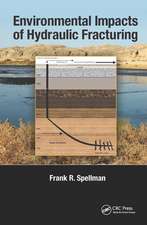Understanding Earth Observation: The Electromagnetic Foundation of Remote Sensing: Remote Sensing and Digital Image Processing, cartea 23
Autor Domenico Soliminien Limba Engleză Hardback – 29 apr 2016
| Toate formatele și edițiile | Preț | Express |
|---|---|---|
| Paperback (1) | 1401.30 lei 6-8 săpt. | |
| Springer International Publishing – 22 apr 2018 | 1401.30 lei 6-8 săpt. | |
| Hardback (1) | 1407.64 lei 6-8 săpt. | |
| Springer International Publishing – 29 apr 2016 | 1407.64 lei 6-8 săpt. |
Din seria Remote Sensing and Digital Image Processing
- 18%
 Preț: 1020.74 lei
Preț: 1020.74 lei - 18%
 Preț: 1231.47 lei
Preț: 1231.47 lei - 18%
 Preț: 944.82 lei
Preț: 944.82 lei - 15%
 Preț: 530.42 lei
Preț: 530.42 lei - 24%
 Preț: 1613.55 lei
Preț: 1613.55 lei - 18%
 Preț: 1385.19 lei
Preț: 1385.19 lei - 24%
 Preț: 793.36 lei
Preț: 793.36 lei - 15%
 Preț: 640.37 lei
Preț: 640.37 lei - 18%
 Preț: 1112.15 lei
Preț: 1112.15 lei - 18%
 Preț: 1408.08 lei
Preț: 1408.08 lei - 15%
 Preț: 662.95 lei
Preț: 662.95 lei - 18%
 Preț: 954.45 lei
Preț: 954.45 lei - 18%
 Preț: 1389.78 lei
Preț: 1389.78 lei - 24%
 Preț: 1476.62 lei
Preț: 1476.62 lei - 18%
 Preț: 1122.10 lei
Preț: 1122.10 lei - 20%
 Preț: 988.27 lei
Preț: 988.27 lei - 18%
 Preț: 945.76 lei
Preț: 945.76 lei - 24%
 Preț: 802.74 lei
Preț: 802.74 lei - 15%
 Preț: 650.86 lei
Preț: 650.86 lei - 15%
 Preț: 650.37 lei
Preț: 650.37 lei - 15%
 Preț: 642.51 lei
Preț: 642.51 lei - 15%
 Preț: 653.46 lei
Preț: 653.46 lei
Preț: 1407.64 lei
Preț vechi: 1716.63 lei
-18% Nou
Puncte Express: 2111
Preț estimativ în valută:
269.36€ • 281.94$ • 224.19£
269.36€ • 281.94$ • 224.19£
Carte tipărită la comandă
Livrare economică 31 martie-14 aprilie
Preluare comenzi: 021 569.72.76
Specificații
ISBN-13: 9783319256320
ISBN-10: 3319256327
Pagini: 816
Ilustrații: XXXVII, 703 p. 297 illus., 231 illus. in color.
Dimensiuni: 155 x 235 x 40 mm
Greutate: 1.21 kg
Ediția:1st ed. 2016
Editura: Springer International Publishing
Colecția Springer
Seria Remote Sensing and Digital Image Processing
Locul publicării:Cham, Switzerland
ISBN-10: 3319256327
Pagini: 816
Ilustrații: XXXVII, 703 p. 297 illus., 231 illus. in color.
Dimensiuni: 155 x 235 x 40 mm
Greutate: 1.21 kg
Ediția:1st ed. 2016
Editura: Springer International Publishing
Colecția Springer
Seria Remote Sensing and Digital Image Processing
Locul publicării:Cham, Switzerland
Public țintă
GraduateCuprins
Contents
Preface.-List of Figures.- List of Tables.- 1. The Electromagnetic Field.-2. Dielectric Behavior of Terrestrial Materials.- 3. Electromagnetic Sources and Radiation.- 4. Waves and Fields.- 5. Propagation.- 6. Reection.- 7. Scattering.- 8. Thermal Emission.- 9. Radiative Transfer and Passive Sensing.- 10.Electromagnetic Spectrum and Remote Information.- 11.Antennas and Apertures in Earth Observation.- 12.Earth Surface Rendering from Images.- 13.Sensing Surface and Underneath Features.- 14.Wave Interaction with Land, Water and Air.- A. Vectors, Coordinates and operators.- Acronyms.- Symbols.
Preface.-List of Figures.- List of Tables.- 1. The Electromagnetic Field.-2. Dielectric Behavior of Terrestrial Materials.- 3. Electromagnetic Sources and Radiation.- 4. Waves and Fields.- 5. Propagation.- 6. Reection.- 7. Scattering.- 8. Thermal Emission.- 9. Radiative Transfer and Passive Sensing.- 10.Electromagnetic Spectrum and Remote Information.- 11.Antennas and Apertures in Earth Observation.- 12.Earth Surface Rendering from Images.- 13.Sensing Surface and Underneath Features.- 14.Wave Interaction with Land, Water and Air.- A. Vectors, Coordinates and operators.- Acronyms.- Symbols.
Recenzii
“The book Understanding Earth Observation - The Electromagnetic Foundation of Remote Sensing is a very comprehensive presentation about earth observation sensor types, techniques and calculations. … presents a complete summary that leads to a comprehensive understanding of the elements and factors involved in using and applying earth observation remote sensing to acquire accurate, reliable and useful data. This text is a good candidate as a reference text due to the comprehensive presentation and up-to-date material and should be considered.” (Jeff Thurston, 3D Visualization World Magazine, 3dvisworld.com, November, 2016)
Notă biografică
Domenico Solimini has obtained the tenure as assistant professor at the University of Rome, Italy, since 1966, and as full professor since 1980. In 1981 he moved to the newly established Tor Vergata University, Rome,Italy, where he acted as dean of Engineering curricula faculties, department director, and PhD coordinator. His teaching has concerned electromagnetic fields, antennas, propagation, and remote sensing. He received the 2005 IEEE Geoscience and Remote Sensing Society Education Award. His research mainly concerns passive and active remote sensing of both Earth's atmosphere and solid land surface, also within several international projects. He has authored and co-authored a few hundred publications. He is a co-founder of GEO-K, a geoinformation company spin-off of Tor Vergata University.
Textul de pe ultima copertă
This volume addresses the physical foundation of remote sensing. The basic grounds are presented in close association with the kinds of environmental targets to monitor and with the observing techniques. The book aims at plugging the quite large gap between the thorough and quantitative description of electromagnetic waves interacting with the Earth's environment and the user applications of Earth observation. It is intended for scientifically literate students and professionals who plan to gain a first understanding of remote sensing data and of their information content.
Caracteristici
Teaches the basic nature of optical and microwave, active and passive, remote sensing (RS) data in a compact unified frame Explains the quantitative information contained in the various types of RS observations of land, water and atmosphere Covers the end-to-end path from basic theory to actual Earth observation Provides numerous references for visualization, further understanding, and in-depth specialized analysis Contains many diagrams and illustrations to facilitate the contact between analytical tools, physical meaning, and reality

















